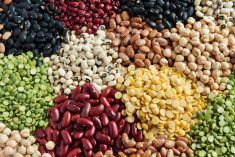MarketsFarm – With a record short position in canola, managed money is largely in control of the market according to analyst Wayne Palmer of Exceed Grain in Winnipeg.
“On Oct. 16, we were trading [January] canola at C$731 per tonne. On Nov. 2 we went down to C$672/tonne, a C$60 drop. Today, we traded at C$725, a C$50 increase,” said Palmer.
“All this is the mighty funds. The funds are carrying a record short position. They got spooked in the middle of October, took half of their position back, and then proceeded to put on a new short position towards the beginning of November,” he explained.
Read Also

U.S. livestock: Feeder cattle hit contract highs on tight supply
Chicago | Reuters – All Chicago Mercantile Exchange feeder cattle futures and most live cattle futures hit contract highs on…
The United States Commodity Futures Trading Commission reported that as of Nov. 7 the net managed money short position in ICE canola futures was 102,884 contracts, based on 4,876 long and 107,760 short.
Palmer said those spec funds were keeping a close eye on the weather in Brazil, which is at either end of the spectrum. While the north remained far too dry to plant, the south was much too wet to get onto the fields. He said the long-range forecast has called for rain in the country’s north, something much needed for its soybean output to hit a record 163 million tonnes in 2023/24, according to the United States Department of Agriculture.
“If they do not do their part, then all of a sudden, the whole world starts coming to the U.S. and Canada for soybeans,” Palmer commented.
In the meantime, he said Canadian canola growers were cash rich with their bins full of the oilseed. With that he laid out two scenarios.
“If [northern] Brazil gets their needed rain, there’s just no export buying that could adequately take care of our canola supply and the soybean supply in the U.S.,” Palmer stated.
“The funds are going to sell everything in sight and take this thing lower. And the biggest thing is, the farmer is long. He hasn’t sold much and eventually is going to have to either dump it on the downside and make new lows, or he’s going to make more money filtering it out as we hit targeted prices.
— Glen Hallick reports for MarketsFarm from Winnipeg.

















